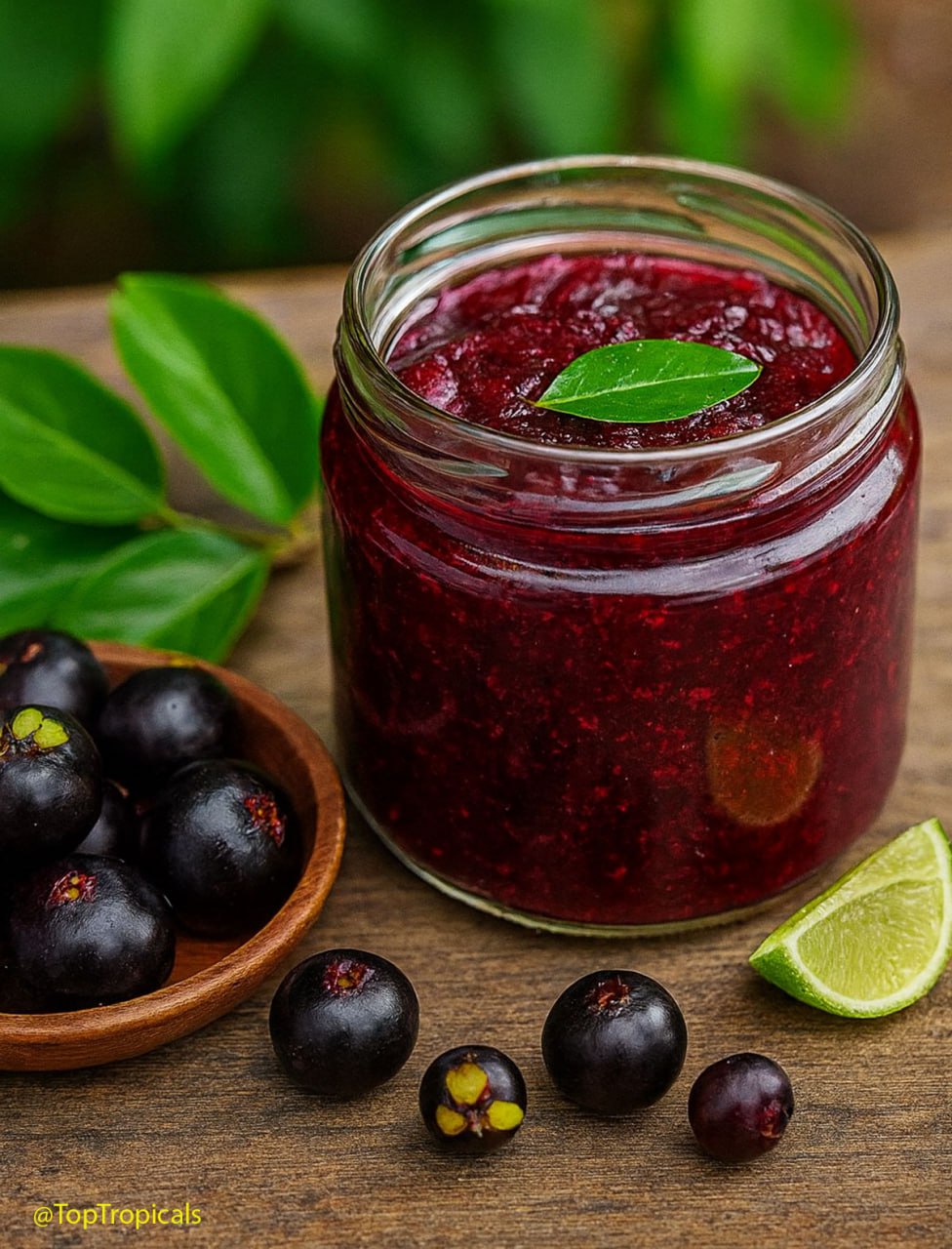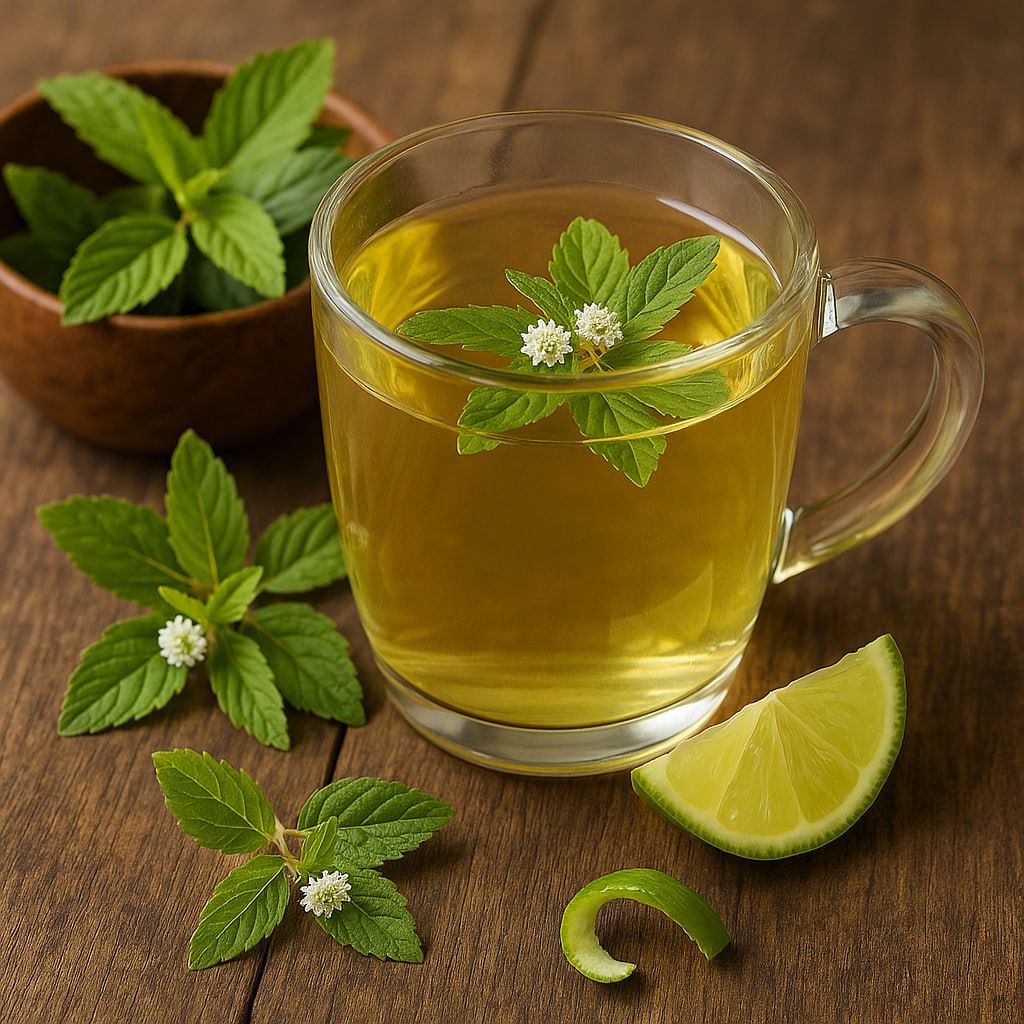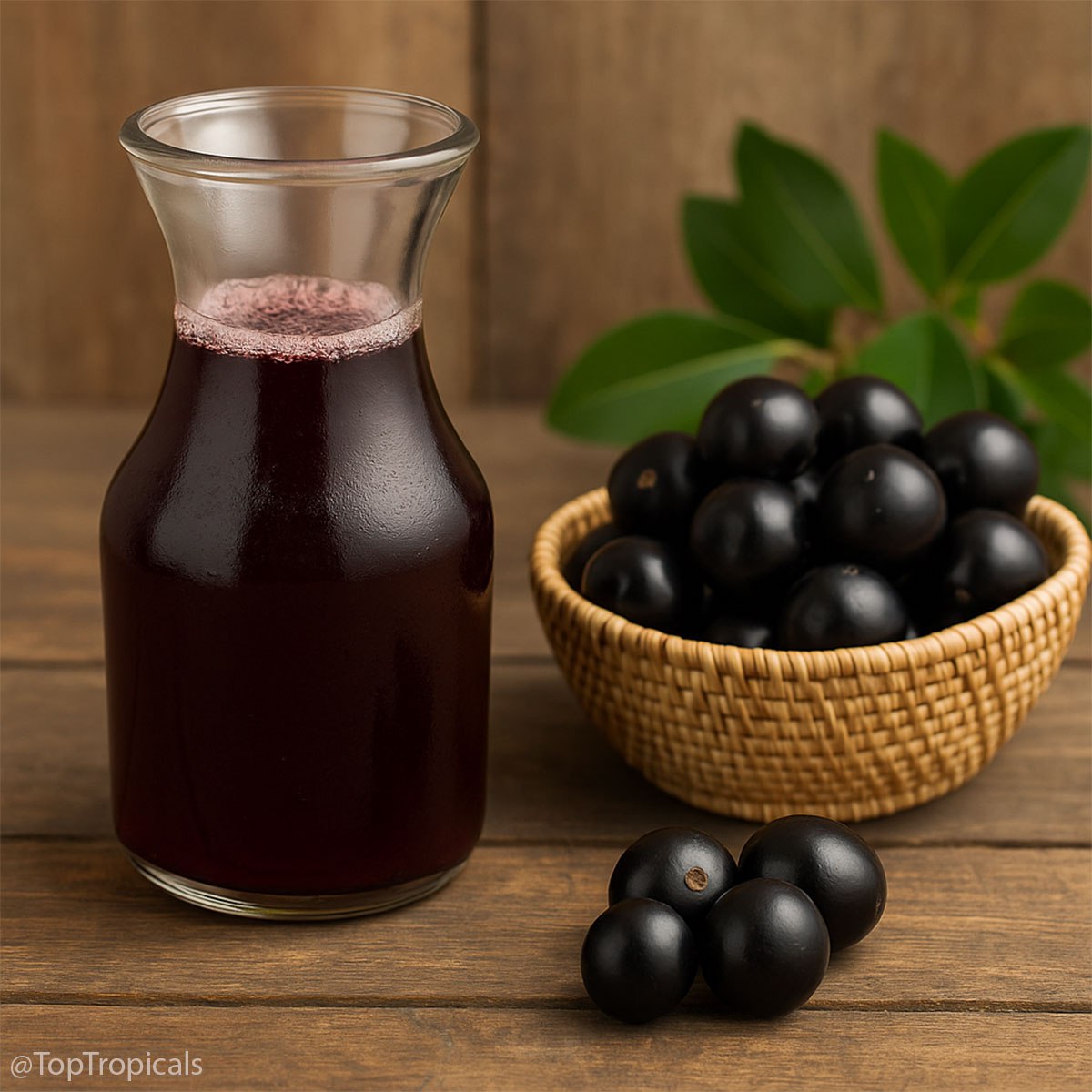Garden Blog - Top Tropicals
Fun Facts About the Guava Flower
Guava Flower
- 🌸 Frilly and Fabulous - Guava flowers may be small, but they're packed with fluffy white stamens that give them a soft, powder-puff look.
- 🌸 Pollinator Magnet - Bees and butterflies love guava blooms, making them a great addition to a pollinator-friendly garden.
- 🌸 Scent-sational - The flowers have a light, pleasant fragrance that adds a touch of sweetness before the fruit even arrives.
- 🌸 Bloom to Fruit - Each flower can turn into a delicious guava fruit, making them both beautiful and productive.
- 🌸 Part of the Showy Family - Guava (Psidium) belongs to the Myrtaceae family, which also includes eye-catching bloomers like Eucalyptus, Bottlebrush (Callistemon), and the stunning Rose Apple (Syzygium).
📚 More from previous posts about: #Guava
🛒 Shop Guava Trees
#Food_Forest #Guava #Fun_facts
🔴 Join 👉 TopTropicals
Fun Facts: Cacao beans
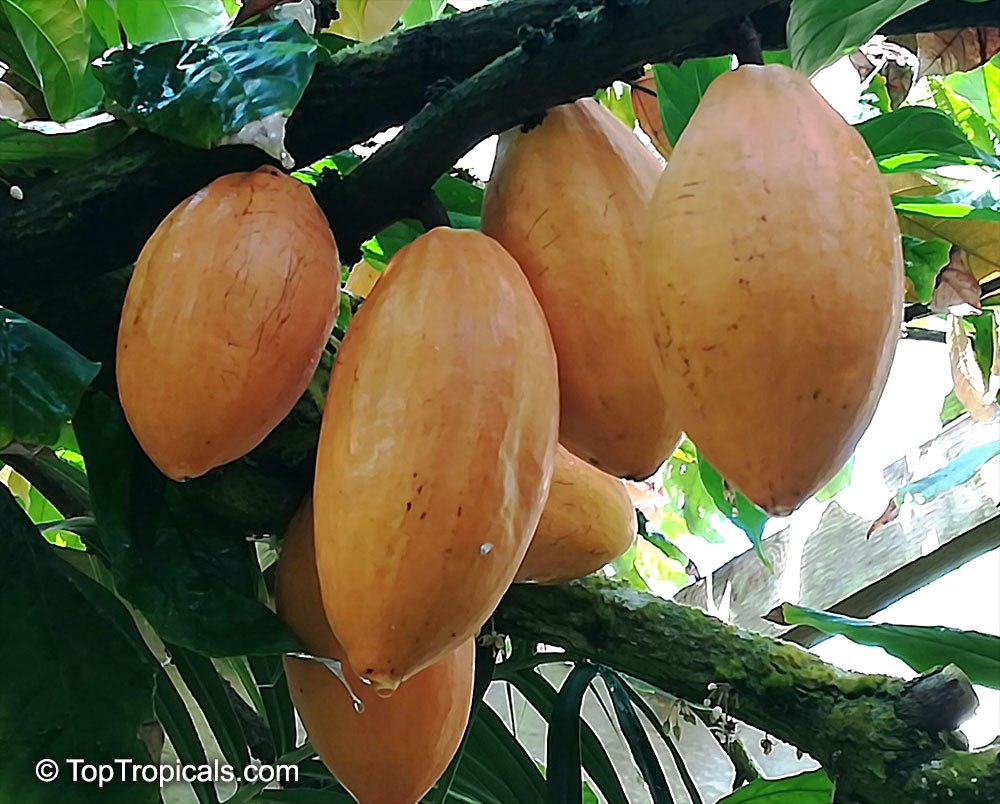
Cacao Chocolate Tree (Theobroma cacao)
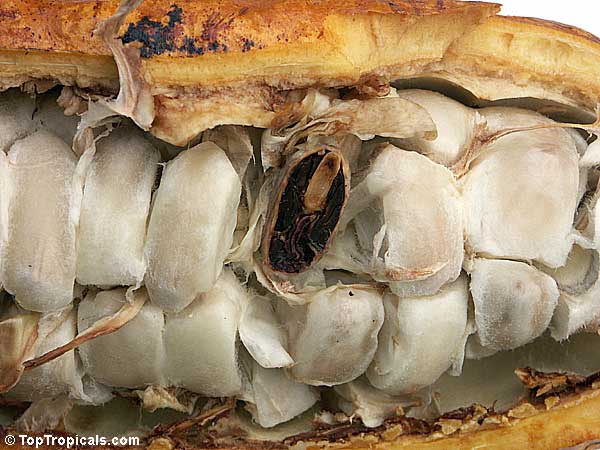
Cacao Chocolate Tree (Theobroma cacao)
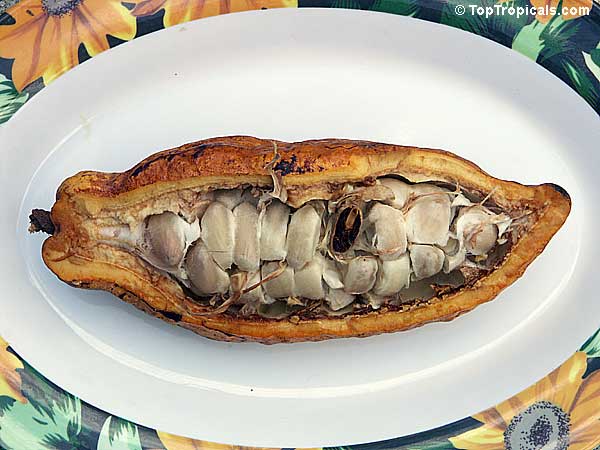
Cacao Chocolate Tree (Theobroma cacao)
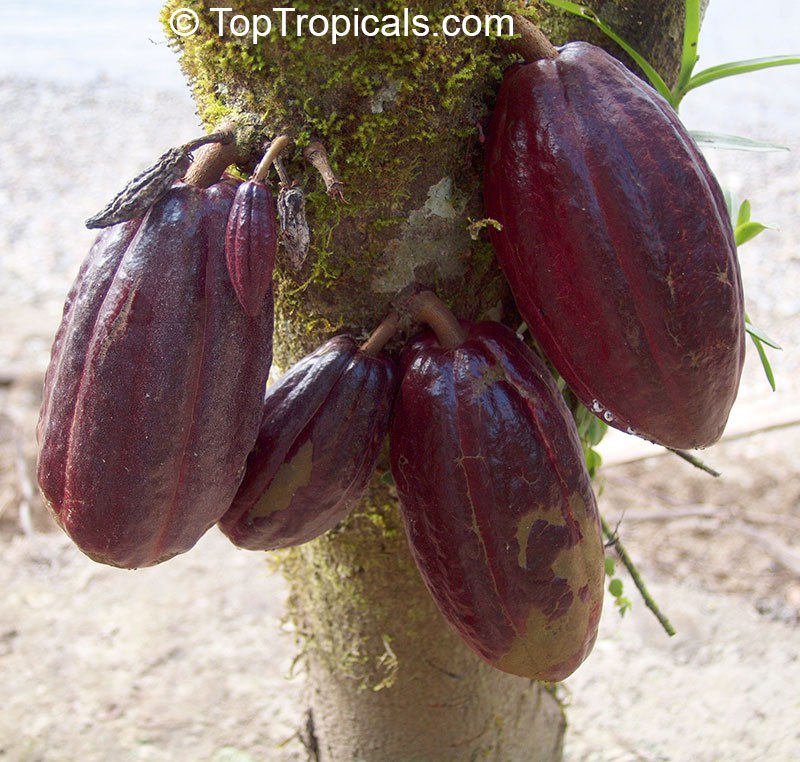
Cacao Chocolate Tree (Theobroma cacao)
🛒Get your own Chocolate Tree
#Fun_Facts #Food_Forest
JOIN 👉 @TopTropicals
Date:
How to Live Longer? Surround Yourself with Plants!
Gardening not only helps you stay active and healthy but can also be a fun and rewarding way to extend your life. Let nature nurture you!
Living Longer with Green Spaces
A study by the Barcelona Institute for Global Health found that a 10% increase in vegetation within 1,600 feet of your home can lower your death risk by 4%.
Why Gardening Could Help You Live Longer
- Nature Exposure: Being outside boosts your mood.
- Exercise: Gardening is a great workout.
- Healthy Eating: Grow and eat your own fresh produce.
- Mind Exercise: Gardening can reduce stress and keep your mind sharp.
Gardening and Longevity
- Many centenarians (people living to 100) garden.
- In "blue zones," where people live longer, gardening is common.
- Gardening promotes daily exercise and a plant-based diet.
Natural Movement vs. Gym Workouts
- 100 years ago, 90% of jobs involved physical activity; today, only 10%
do.
- Walking 2 hours a week can lower the risk of major diseases.
- Gardening offers fresh air, exercise, and fun.
Gardening vs. Gym
- Gardening can be as effective as gym workouts.
- Research shows 3 hours of gardening equals a 1-hour gym session.
- Tasks like weeding, digging, and mowing burn significant calories.
Calories Burned in 1 Hour of Gardening
- 340 cal: Chopping wood, using power tools, tilling, mowing with a hand
mower, shoveling.
- 272 cal: Carrying wood, digging, clearing land, wheelbarrow work.
- 238 cal: Blower operation, planting, trimming, weeding.
- 224 cal: Raking and sacking leaves.
- 136 cal: Picking fruit, gathering tools, walking.
- 102 cal: Fertilizing or seeding a lawn.
- 34 cal: Watering plants.
Fun Facts
- Half an hour of weeding burns 150 calories.
- Gardening five hours a week burns 700 calories.
- Over a year, that's 20,000 calories, equivalent to running seven
marathons.
- A lifetime of gardening can burn a million calories.
Grumichama jam: quick-n-fun exotic recipes
🔴Cook Grumichama cherries with sugar and lime juice.- 🔴A deep red jam with a cherry-meets-blackberry flavor.
Grumichama Jam: Quick-n-Fun Exotic Recipes
Ingredients
- 2 cups fresh Grumichama cherries (Eugenia brasiliensis)
- 1 cup sugar
- 1 tbsp lime juice
Instructions
- Remove seeds from Grumichama cherries.
- Place fruit in a saucepan with sugar and lime juice.
- Simmer over low heat until thick and glossy, stirring often.
- Pour into sterilized jars and let cool before sealing.
🛒 Plant Grumichama tree (Eugenia brasiliensis)
📚 Learn more:
- ▫️The best tasting and most beautiful tropical cherry
- ▫️Why grow Grumichama? Benefits of Brazilian Eugenia Tree - Cherry of the Tropics
#Food_Forest #Recipes
🟢 Join 👉 TopTropicals
Date:
Discover 10
best fruit trees to grow
in Florida and Southern landscapes
Q: We recently moved into our new home in Florida, and the property is a great size - 5 acres - but it currently has no trees, just a few palms. I'm looking to plant some productive fruit trees to start building our own Food Forest. What fruit trees would you recommend as a good starting point?
A: With five acres of space, you have a fantastic opportunity to create a fruitful garden that can provide for your family for many years to come. Below are our top recommendations for must-have, easy-to-grow fruit trees that thrive in Florida's climate, grow quickly, and start producing right away.
1. Mango Tree
Mango trees (Mangifera indica) are a must-have for any Florida garden, embodying the essence of the Sunshine State with their delicious and nutritious fruit packed with vitamins and fiber. These fast-growing, low-maintenance trees thrive with minimal water and are heat-tolerant. Grafted varieties produce high-quality, fiberless fruit in just 2-3 years, while dwarf "condo" mangoes are perfect for smaller spaces or containers. While young trees need frost protection, mature trees handle cold better. Grafted mangoes offer rich taste that you won't find in commercially grown, fibrous varieties, ensuring a sweet and vibrant harvest from your own garden.
2. Avocado Tree
The Avocado tree (Persea americana) is an essential addition to any tropical or subtropical garden. Known for its health benefits and superfood status, it's a favorite fruit that's not only productive but also a beautiful ornamental tree. Some avocado varieties are more cold-tolerant than mango trees, with the ability to survive temperatures below 25F. While many enjoy growing avocado from seed, only grafted trees guarantee quality fruit and immediate production, as seedlings can take 7-8 years to bear fruit. To successfully grow avocado, ensure good drainage by planting on a raised mound (4-6 inches) and keep the soil consistently moist. There are also compact varieties like Wurtz and Fuerte that thrive in containers or small spaces, making them ideal for patios and small gardens.
3. Tropical Cherries
Tropical cherries, such as Cherry of the Rio Grande (Eugenia aggregata), Grumichama (Eugenia brazilensis), Pitomba (Eugenia luschnathiana), and Black Surinam Cherry (Eugenia uniflora var. Lolita), are popular and easy-to-grow fruit trees that offer fast growth and excellent fruit production. These compact, versatile trees thrive in both the ground and containers, starting to produce fruit almost immediately. Eugenias are low-maintenance, requiring minimal water, thriving in various soil types, and being pest-free. They are heat-tolerant and can endure cool winters, surviving light frosts. Birds love the fruit, but don't worry - there will always be plenty for everyone.
4. Barbados Cherry Tree
Barbados Cherry (Malpighia glabra), also known as Acerola, is a tropical cherry renowned for having the highest vitamin C content of any fruit. This nutrient-packed fruit is perfect for jellies, jams, and freezing without losing its vitamin C. The Barbados Cherry is a fast-growing, dense shrub that fruits multiple times a year, providing abundant harvests for gardeners seeking quick results. It thrives in alkaline soil, tolerates drought, and is relatively cold-hardy, withstanding light freezes. Birds love the fruit, making it a great addition to wildlife-friendly gardens. The dwarf variety, Nana, with its small leaves and fruit, is perfect for containers, borders, or even bonsai, adding ornamental value to any space.
5. Noni Tree
The Noni Tree (Morinda citrifolia) is a top superfood plant that makes a fantastic addition to any Southern garden. Known for its numerous medicinal benefits, Noni fruit offers anti-inflammatory properties, relief from arthritis, and support for conditions like diabetes, metabolism, and weight loss. It's even believed to help fight cancer. Noni trees grow quickly and begin producing fruit within 2 years from seed. This tough, resilient plant thrives in poor soil, endures summer heat, and withstands drought conditions. Despite its tropical appearance, Noni is surprisingly cold-hardy, recovering well after leaf damage in cooler weather. In addition to its health benefits, the Noni tree has ornamental value, with large, waxy leaves and unique fruit, where the flower appears to grow directly on the fruit!
6. Macadamia Nut Tree
The Macadamia Nut Tree (Macadamia integrifolia) is a fantastic addition to any garden, allowing you to grow these delicious, high price tag, nutrient-rich nuts right at home. These trees are cold-hardy, grow quickly, and thrive in all Florida soil types. Once established, they are productive and can tolerate both flooding and drought. Older trees can survive colder winters, while young trees need protection from temperatures below 25-26F. Macadamia trees like plenty of water and a special fertilizer program, including liquid fertilizers and microelements, to ensure healthy root development and optimal production. Aside from being rich in healthy fats, vitamins, and minerals, macadamia nuts offer numerous health benefits, such as improved digestion, heart health, weight management, and blood sugar control. They are also packed with tocotrienols - antioxidants which may protect against cancer and brain diseases.
7. Papaya Tree
Papaya trees (Carica papaya) are resilient, easy to grow, and produce fruit year-round. Rich in papain, a digestive enzyme, papayas are a superfood that promotes gut health. These fast-growing trees often begin producing fruit within the same year they're planted, providing quick rewards for gardeners. Many varieties, especially dwarf papayas, are space-efficient, reaching only 6-8 feet tall while still yielding large crops, making them perfect for small gardens. Surprisingly hardy for a tropical plant, papayas can withstand light freezes and strong winds (tested in hurricanes!). While they are self-fertile, planting 2-3 different cultivars improves pollination and increases yields. "Solo" cultivars, with their smaller, round or oval fruits, are sweet and less susceptible to fruit flies.
8. Guava Tree
Guava trees are beloved for their flavorful fruit, commonly used in juices, drinks, and desserts. Popular varieties include Tropical Guava (Psidium guajava), Cattley Guava (Psidium littorale), Cas Guava (Psidium friedrichsthalianum), and Pineapple Guava (Feijoa sellowiana). Despite their tropical nature, guavas are surprisingly cold-hardy, suitable for cooler climates and occasional frost. These trees thrive in moist conditions and can tolerate some flooding, while their compact growth makes them easy to maintain at any height or shape. Guavas are fast-fruiting, often producing fruit within a year of planting, and even some varieties in 1 gal containers. The dwarf Nana variety is perfect for container culture, producing full-sized fruit in a compact form. Guava trees are mostly pest-resistant, though mealybugs may require occasional treatment with neem oil in humid, rainy areas. Planting multiple guava trees ensures a continuous supply of fresh, juicy fruit and delicious guava juice for everyone to enjoy.
9. Jackfruit Tree
The Jackfruit tree (Artocarpus heterophyllus) is a striking, fast-growing tree known for producing the largest fruit grown on a tree, making it a showstopper in any garden. Nutrient-packed and often used as a meat substitute in South Asian cuisine, Jackfruit is also delicious in curries, chutneys, and as dehydrated chips. These trees grow quickly, have large waxy leaves, and can be maintained at a compact height of 7-8 feet, making them ideal for smaller spaces and easier cold protection. Despite being a tropical species, Jackfruit trees are relatively cold-tolerant and can survive light frost (although on the account of production volume), with established trees being more hardy than seedlings. Jackfruit trees begin producing fruit within 3-4 years from seed, and varieties come true to seed, eliminating the need for grafting, though it can be done for specific varieties.
10. Loquat Tree
The Loquat tree (Eriobotrya japonica) is a fast-growing, drought-tolerant, and highly cold-hardy tropical fruit tree that thrives in Florida gardens. Loquats are heavy producers, with juicy, aromatic fruit that ripens from early spring to early summer, offering a delicious apricot-like flavor. This compact tree is perfect for small gardens, beginners, and those with limited space. Loquats are undemanding, thriving in any soil and withstanding summer heat, winter cold, heavy rains, and occasional flooding. Nutrient-rich, they are high in sugar, acids, vitamins B and C, minerals, and pectin. Loquats are versatile, enjoyed fresh or used in fruit salads, jams, jellies, chutneys, pies, sauces, and even wine-making, and they are often used as a natural sweetener.
Secret Banana Daiquiri Recipe: Healthy Never Tasted So Good!
🍹 Banana Daiquiri Recipe Ingredients:
- · 1 ripe banana
- · 2 ounces light rum
- · 1 tablespoon sugar
- · 1 ounce lime juice
- · 1/2 ounce triple sec (optional for added depth)
- · Ice cubes
- · Slice of lime or banana for garnish
- 🍹Instructions:
- · Prepare the Banana: Peel the banana and cut it into chunks.
- · Blend the Ingredients: In a blender, combine the banana chunks, light rum, sugar, lime juice, and triple sec.
- · Add a handful of ice cubes. Blend on high until the mixture is smooth.
- · If the mixture is too thick, you can add a small amount of water or more lime juice to adjust the consistency.
🍹Garnish and Serve:
· Pour the mixture into a chilled glass. Garnish with a slice of lime on the rim of the glass or a small wheel of banana. Serve immediately and enjoy the refreshing tropical flavors!- · This Banana Daiquiri is not only refreshing but also offers a creamy texture and a perfect balance of sweetness and citrus. It's a fantastic choice for hot days or when you're in the mood for something a bit exotic. Cheers!
📚 About Banana from previous posts:
- 💋Top Ornamental Banana Varieties - Which One Belongs in Your Garden?
- 💋Best Edible Bananas to Grow - Sweet, Unique, and Delicious!
- 💋How Many Banana Varieties Can You Grow? (More Than You Think!)
- 💋Top 10 fruit you'll ever need for your health benefits: #5 Banana growing and fun facts
- 💋How to make tasty Carambola Banana Whip
- 💋Why Bananas? They are good for you and are fun to grow
- 💋Bananas help you feel fuller and enhance your mood
🛒 Banana Bliss Starts Here
#Food_Forest #Recipes
🔴 Join 👉 TopTropicals
How many varieties of Bananas can I grow?
Bananas (Musa sp.) in containers
- 💛 At Top Tropicals, we have a few dozen varieties of Bananas (Musa sp.) - ranging from popular commercial and plantain types to spectacular ornamental bananas with colorful, tropical foliage.
- 💛 Banana plants are a favorite in Southern gardens, indoor plant collections, and greenhouses in cooler climates. Fast and easy to grow, they transform any space into a tropical paradise in just one season and can produce fruit for you in as little as 8–18 months after planting.
- 💛 Bananas are a powerhouse of nutrition, packed with potassium for heart health, fiber for digestion, and vitamins B6 and C for immunity. They’re a natural energy booster, great for snacks, smoothies, and even baking. Plus, their tryptophan content can improve your mood, and their low sodium helps regulate blood pressure.
- 💛 With so many delicious and unique varieties, growing different types of bananas lets you enjoy a range of flavors, textures, and uses - whether fresh, blended, or cooked - making them a must-have in any tropical or indoor garden!
Discover the most popular edible and ornamental bananas in our next post 🔽
🎥 Banana selection today at TopTropicals farm. Come over to pick the best one!
📚 More about Banana from previous posts:
- 💋Top 10 fruit you'll ever need for your health benefits: #5 Banana growing and fun facts
- 💋How to make tasty Carambola Banana Whip
- 💋Why Bananas? They are good for you and are fun to grow
- 💋Bananas help you feel fuller and enhance your mood
🛍 Shop Banana varieties
#Food_Forest #Bananas
🔴 Join 👉 TopTropicals
Sweetleaf tea: quick-n-fun exotic recipes
- 🟢Delicious Sweetleaf tea can be made with Mexican Aztec sweet herb (Lippia dulcis).
- 🟢Steep Aztec sweet herb leaves in hot water with lime peel.
- 🟢Naturally sweet, no sugar needed!
- Fresh or dried Aztec sweet herb (Lippia dulcis) leaves
- Hot water
- Lime peel or a slice of lime
- Bring water to a boil and pour over Lippia dulcis leaves.
- Add lime peel or a slice of lime.
- Let steep for 5–10 minutes.
- Enjoy this naturally sweet tea—no sugar needed!
Sweetleaf tea: quick-n-fun
Ingredients
Instructions
🛒 Add sugar-free Mexican Sweetleaf (Lippia dulcis) to your herb garden
#Food_Forest #Recipes
🟢 Join 👉 TopTropicals
Jaboticaba wine: quick-n-fun exotic recipes
A homemade tropical wine with rich berry flavor and a hint of earthiness. This traditional Brazilian recipe turns fresh Jaboticaba fruit into a deep purple wine with a unique aroma and flavor somewhere between grape and plum. Easy to make, fun to share!
🍴 Jaboticaba wine: quick-n-fun exotic recipe
Ingredients
- 4 lb fresh ripe Jaboticaba fruits (Myrciaria cauliflora)
- 2 to 3 cups granulated sugar per gallon of pulp
- 1 gallon non-chlorinated water
- 1 tsp wine yeast (optional)
- 1 cinnamon stick or a few cloves (optional)
- Clean glass fermenting jar or food-grade bucket with loose cover
Instructions
- Wash and lightly crush Jaboticaba fruits. Do not remove skins; they add flavor and color.
- Mix crushed fruit with sugar and enough water to make about one gallon of pulp. Stir until sugar dissolves.
- Cover loosely and leave in a warm place (70-80F). Stir once or twice daily. Fermentation begins within 1-2 days.
- Let ferment 5-10 days, stirring daily. When bubbling slows, strain through cheesecloth into a clean jug.
- Seal loosely with an airlock or vented cap. Rest 2-4 weeks in a cool, dark spot (60-70F).
- Carefully pour clear wine into bottles, leaving sediment behind. Cork and let age a few more weeks.
- Chill before serving. Enjoy responsibly!
Tips
- Reduce sugar to 1.5 cups per gallon for a drier wine.
- Add more sugar after first fermentation for a sweeter dessert wine.
- Add a spoon of honey for a floral note.
- Save the skins to make Jaboticaba syrup or jam.
Grow your own exotic Jaboticaba fruit
📚 Learn more:
- ▫️What does Blue Jaboticaba taste like?
- ▫️How Blue Jaboticaba is different from regular Jaboticaba?
- ▫️What is Jaboticaba? I like the sound of this word!
#Food_Forest #Recipes
🟢 Join 👉 TopTropicals
Avocado shrimp boats: Quick-n-Fun exotic recipes
🟢Halve an avocado, scoop out a little extra.- 🟢Fill with sauteed shrimp tossed in garlic-lime butter.
- 🟢Enjoy instant tropical feast!
🛒 Grow your own Avocado tree
Avocado shrimp boats: Quick-n-Fun exotic recipes
Ingredients
- 2 ripe avocados
- 1 cup shrimp, peeled and deveined
- 2 tbsp butter
- 2 cloves garlic, minced
- 1 tbsp lime juice
- Salt and pepper, to taste
- Fresh parsley, chopped (for garnish)
Instructions
- Halve the avocados and scoop out a little extra to make room.
- Sauté shrimp in butter with garlic and lime juice until pink and cooked through.
- Season with salt and pepper.
- Fill avocado halves with shrimp mixture.
- Garnish with parsley and serve immediately.
#Food_Forest #Recipes #Avocado
🟢 Join 👉 TopTropicals



